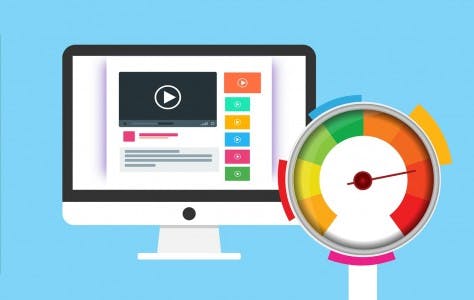
Once you have created your website, targeted your keywords, and set everything in order to optimize your site for the search engines, you still have work to do to keep your site’s SEO up to par. As you probably know, the internet is extremely competitive and no matter how successful you are with the page rank of your site, there will always be a competitor who is trying to knock you out of your position. So how can you continue to keep your SEO sharp in the midst of such a competitive marketplace? By the effective use of advanced split testing strategies, and this article will help you develop a plan for making that happen.
Why Split Testing?

According to the Google Patent Application, your customer’s behavior is a key factor in determining the relevance of your website. Split testing is a means of testing variables on your site such as links, content, headlines, and graphics in order to find out which variations will yield the greatest number of positive behaviors from your customers. Once you know what is working, you continue to apply it and test it in order to ensure that you are getting the most out of every visitor to your website.
Applying Split Testing to Your Web Pages
Before you can effectively apply split testing strategies to your web pages, you must have an objective for your pages. This will help you to focus your split testing by having a primary goal to focus your testing towards. For example, if you are using split testing to optimize your home page you have to determine if your goal is to collect opt-ins, make sales, or get your customers to click on a link that leads to an offer.
Split Testing Example: Page for Collecting Opt-Ins
If the goal of your page is to collect customer emails through an opt-in form, the ultimate goal of your split testing is going to be getting your opt-in percentage up. To begin, create two separate pages (page A and page B) that are identical with the exception of ONE variable. If you change more than one variable on page B you will not know what is making the difference in the results between the two.
The best variable to start with is the headline, but if you have a graphic at the top of your page you can also start with that. Just make sure that it is the most noticeable thing on your opt-in page and make sure that it is the only difference between page A and page B. Next, use A/B split testing software such as Google Optimizer or Google Analytics to alternate between pages A and B every time that a new visitor clicks on your opt-in page. This is known as 50/50 A/B split testing.
After you have run A and B for a few hundred visits, it is time to examine the difference in results. There are two things which you will want to look at:
- Time spent on the page
- Amount of people who filled in your opt-in form
If you get a longer amount of time or a greater number of opt-ins or both from either page A or B, that page is the one you want to make your new opt-in page. If there is no difference, you keep your opt-in page the same and move on to the next variable. The next variable might be the content that is above your opt-in form, and just below your headline. However, if you tested the header (top graphic) of the page first, then you test the headline next.
Just make sure that you are only testing ONE new variable at a time. Repeat the same process with pages A and B and you will find out which page is getting better results in regards to time spent on the site or opt-ins. Once you have found the winning variable, move on to the next feature of your web page until you have tested every variable on your opt-in page.
Examples of Things to Test on Your Opt-in Pages
The following is a list of the variables which you can test with A/B split testing:
- Header graphics
- Headlines
- Content (one line of one paragraph at a time if needed)
- Calls to action
- Opt-in buttons
- Spam disclaimers
- The background color of web pages
- Font types
- Font colors
- Font sizes
Other Kinds of Approaches
If your opt-in page is longer, or if you are split testing sales pages you can have multiple calls to action on your page and test them one at a time just as you would part of the content. You can also split one page into several pages by having a link at the bottom of each one that goes to the next section of your content. This works very well for long-form sales pages where you need to test dozens of variables.
Some Goals to Shoot For
You might be wondering what realistic goals you can set for your split testing strategies. The following numbers will give you an idea of what to shoot for:
- Opt-in page conversions:
15% to 40% depending on how competitive your niche is. Some opt-in pages that use videos can get as high as 50% conversions.
- Sales Page Conversions:
1% to 8% depending again on how competitive a niche you are marketing to. Sales pages that are preceded by opt-in pages will almost always yield higher percentages.
It is also important to consider the traffic sources and make sure that they are relevant to the offer of your site. This is something else that you can test if you are not getting the desired results on your web pages.
If this sounds like a lot of work, that’s because it is. However, with a little time and patience split testing can yield tremendous results in regard to the SEO of your website and the effectiveness of your marketing campaigns.
Additional Resources
- http://www.warriorforum.com/forum - A community of internet marketers who discuss methods of marketing, testing, and search engine optimization
- http://www.conversationmarketing.com - A website with strategies about improving conversion rates and positive customer behaviors
- https://smallbusiness.chron.com/use-google-website-optimizer-49929.html - Information on how to use the Google Website optimizer
- https://seositecheckup.com/articles/why-you-must-measure-your-seo-efforts - Additional information on measurement for improving your site’s SEO
- Pricing
- Free Tools
- Articles
- Login
- Free 7-Day Trial